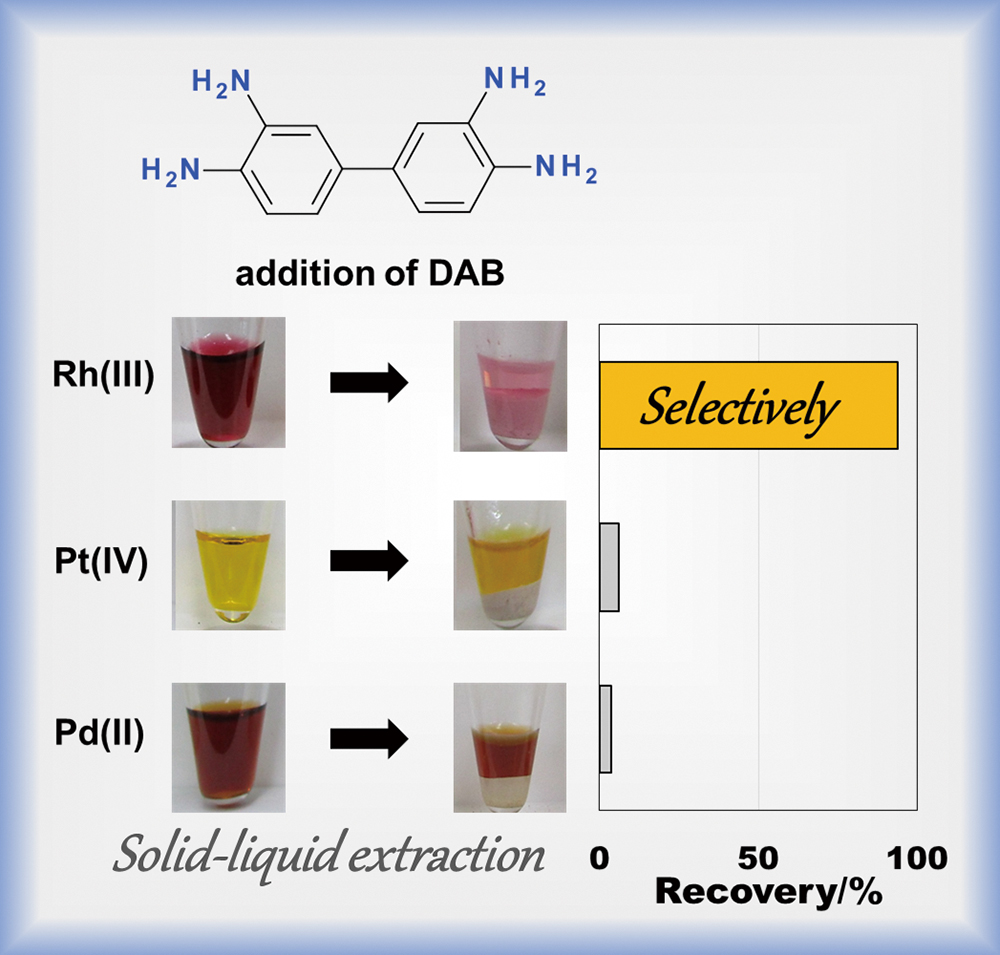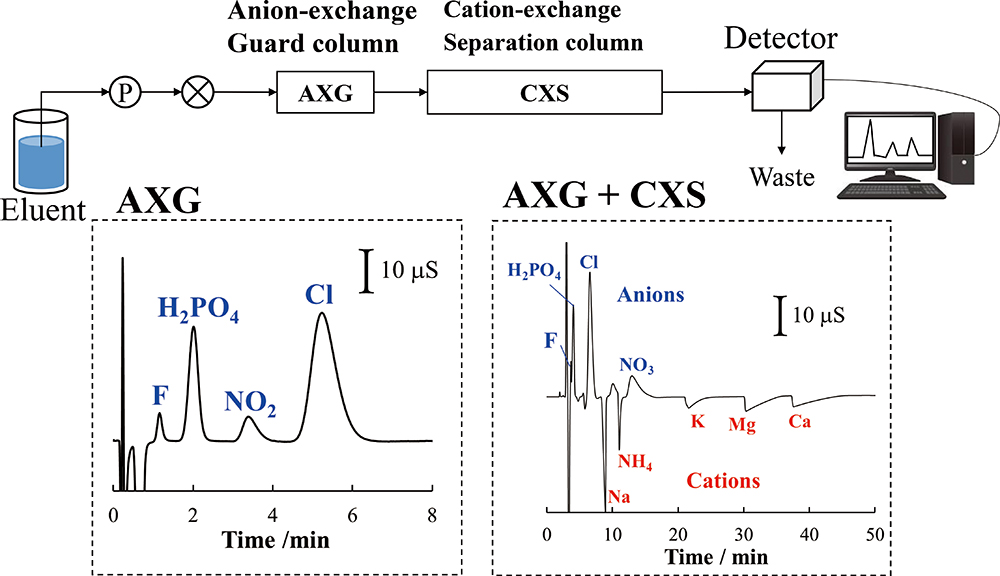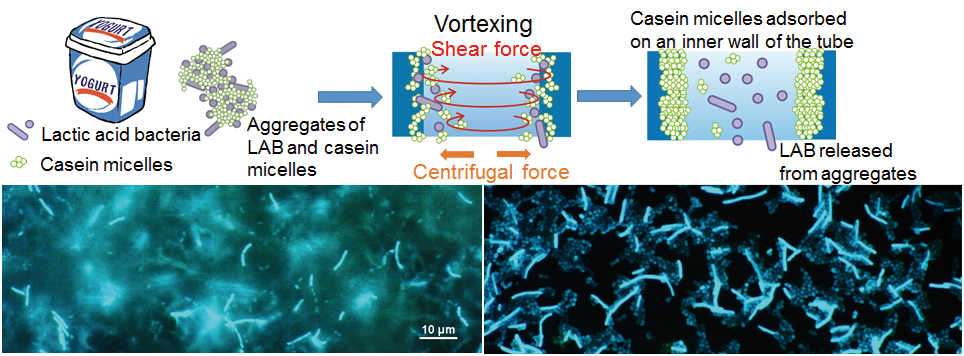1 0 0 0 OA Chemometrics and Related Fields in Python
- 著者
- Shigeaki MORITA
- 出版者
- The Japan Society for Analytical Chemistry
- 雑誌
- Analytical Sciences (ISSN:09106340)
- 巻号頁・発行日
- vol.36, no.1, pp.107-112, 2020-01-10 (Released:2020-01-10)
- 参考文献数
- 146
- 被引用文献数
- 18
The Python programing language is becoming a promising tool for data analysis in various fields. However, little attention has been paid to using Python in the field of analytical chemistry, though recent advances in instrumental analysis require robust and reliable data analysis. In order to overcome the difficulty in accurate analysis, multivariate analysis, or chemometrics, has been widely applied to various kinds of data obtained by instrumental analysis. In the present work, the potential usefulness of Python for chemometrics and related fields in chemistry is reviewed. Many practical tools for chemometrics, e.g., principal component analysis (PCA), partial least squares (PLS), support vector machine (SVM), etc., are included in the scikit-learn machine learning (ML) library for Python. Other useful libraries such as pyMCR for multivariate curve resolution (MCR), 2Dpy for two-dimensional correlation spectroscopy (2D-COS), etc. can be obtained from GitHub. For these reasons, a computational environment for chemometrics is easily constructed in Python.
- 著者
- Niu Yuqi Gao Wenhui Li Hui Zhang Jingxuan Lian Yunhe
- 出版者
- The Japan Society for Analytical Chemistry
- 雑誌
- Analytical Sciences (ISSN:09106340)
- 巻号頁・発行日
- pp.19P421, (Released:2020-01-03)
- 被引用文献数
- 6
- 著者
- Mercedes BECERRA-HERRERA Valentina MIRANDA Pablo RICHTER
- 出版者
- The Japan Society for Analytical Chemistry
- 雑誌
- Analytical Sciences (ISSN:09106340)
- 巻号頁・発行日
- pp.19P409, (Released:2019-12-27)
- 被引用文献数
- 6
- 著者
- Yukihiro ESAKA Saki KUNISHIMA Hiromitsu ARUGA Takuhei YAMAMOTO Hiroya MURAKAMI Norio TESHIMA Bunji UNO
- 出版者
- The Japan Society for Analytical Chemistry
- 雑誌
- Analytical Sciences (ISSN:09106340)
- 巻号頁・発行日
- pp.19N023, (Released:2019-08-30)
- 被引用文献数
- 3
1 0 0 0 OA Quantitative Analysis of Red Phosphorus in Polypropylene by Evolved Gas Analysis Mass Spectrometry
- 著者
- Takahisa ISHIMURA Atsushi WATANABE Chuichi WATANABE Norio TERAMAE
- 出版者
- The Japan Society for Analytical Chemistry
- 雑誌
- Analytical Sciences (ISSN:09106340)
- 巻号頁・発行日
- pp.19N029, (Released:2019-12-13)
- 被引用文献数
- 1
- 著者
- Tomoya SUZUKI Takeshi OGATA Mikiya TANAKA Tohru KOBAYASHI Hideaki SHIWAKU Tsuyoshi YAITA Hirokazu NARITA
- 出版者
- The Japan Society for Analytical Chemistry
- 雑誌
- Analytical Sciences (ISSN:09106340)
- 巻号頁・発行日
- vol.35, no.12, pp.1353-1360, 2019-12-10 (Released:2019-12-10)
- 参考文献数
- 17
- 被引用文献数
- 4
The effective recovery of Rh(III) from mixtures also containing Pd(II) and Pt(IV) is one of the most difficult tasks in platinum group metal refining. Adding 3,3′-diaminobenzidine (DAB) to 7 and 10 M HCl aqueous solutions containing Rh(III), Pd(II), and Pt(IV) chlorido species affords the effective separation of Rh(III) from Pd(II) and Pt(IV) through a process where Rh(III) becomes sequestered into solid phases composed of DAB. The stoichiometry and inner coordination sphere of the metal in Rh–DAB complexes were determined by estimating the Rh(III), H+, and Cl− concentrations in the solid phase and X-ray absorption fine structure measurements to clarify the mechanism of DAB selectivity for Rh(III). These results indicate that the Rh–DAB reaction in a concentrated HCl solution occurs in two steps: (1) the precipitation of DAB trihydrochloride salts, where DAB’s amino groups are protonated and (2) anion exchange of the trihydrochloride salts for chloride ions with [RhCl6]3−, which is the predominant species in a concentrated HCl solution. By contrast, ion-pair complexes with [PdCl4]2− and [PtCl6]2− were not observed in DAB phases. The significantly lower affinity of the DAB trihydro cation for [PtCl6]2− and [PdCl4]2− than for [RhCl6]3− in 7 and 10 M HCl solutions accounts for the effective separation of Rh(III) from Pd(II) and Pt(IV).
- 著者
- Miki ISODA Makoto FUKUMA Akira HARATA
- 出版者
- The Japan Society for Analytical Chemistry
- 雑誌
- Analytical Sciences (ISSN:09106340)
- 巻号頁・発行日
- vol.35, no.12, pp.1311-1315, 2019-12-10 (Released:2019-12-10)
- 参考文献数
- 22
- 被引用文献数
- 3
The first demonstration of a photothermal heterodyne interferometer (PHI) combined with micro-HPLC (high-performance liquid chromatography) is reported. A semiconductor laser (375 nm) was used for excitation, and the temperature change caused by heat released from photoexcited species was detected with a He–Ne laser (632.8 nm). The temperature-dependent refractive index change of the solvent modified the optical path of the probe beam. The phase difference between two arms of the interferometer, one passing through the heated sample and another as a reference, was sensitively detected with the PHI. The nitro-polycyclic aromatic hydrocarbon and vitamin mixture separated via micro-HPLC was successfully detected with the PHI as well as a UV detector. The detection limit of the PHI for riboflavin in the absorbance units was 77 times better than that of the commercial UV detector. The detection limit of the PHI with a small flow cell (6 nL) was the same as that with a large flow cell (18 nL) for 1-nitropyrene.
- 著者
- Peter J. WATKINS
- 出版者
- The Japan Society for Analytical Chemistry
- 雑誌
- Analytical Sciences (ISSN:09106340)
- 巻号頁・発行日
- pp.19P349, (Released:2019-11-08)
- 被引用文献数
- 3
- 著者
- Junho LEE Ji Won HA
- 出版者
- The Japan Society for Analytical Chemistry
- 雑誌
- Analytical Sciences (ISSN:09106340)
- 巻号頁・発行日
- vol.35, no.11, pp.1237-1241, 2019-11-10 (Released:2019-11-10)
- 参考文献数
- 42
- 被引用文献数
- 2
Questions surrounding the optical properties of two-dimensional (2D) triangular single gold nanoplates (AuNPs) remain largely unanswered. Herein, a scanning-electron microscopy-correlated single-particle study was conducted to identify polarization-dependent optical properties of AuNPs under dark-field (DF) and differential interference contrast (DIC) microscopy. AuNPs with an aspect ratio of ∼3 showed a single broad DF scattering spectrum without separation of the two dipole and quadrupole resonance modes present in 2D AuNPs. Polarization-sensitive interference properties of the individual AuNPs were revealed through periodic changes in the intensities and types of DIC images obtained. A dipole resonance mode was found to mainly contribute to the polarization-sensitive interference properties of AuNPs. Furthermore, DIC polarization anisotropy allowed us to track the real-time orientation of a dipole resonance mode of a AuNP rotating on a live cell membrane.
- 著者
- Young-Jin KIM Kazuo HOSOKAWA Mizuo MAEDA
- 出版者
- The Japan Society for Analytical Chemistry
- 雑誌
- Analytical Sciences (ISSN:09106340)
- 巻号頁・発行日
- vol.35, no.11, pp.1227-1236, 2019-11-10 (Released:2019-11-10)
- 参考文献数
- 40
- 被引用文献数
- 11
We present a microRNA (miRNA) detection method that achieves enhanced sensitivity by means of a power-free microfluidic chip without the requirement of an external power source. The miRNA detection is completed by sandwich hybridization between probe DNAs and target miRNA with small sample volume (0.5 μL) within 20 min. Fluorescence signals after hybridization were amplified by laminar flow-assisted dendritic amplification (LFDA) using fluorescein isothiocyanate (FITC)-labeled streptavidin (F-SA) and biotinylated anti-streptavidin (B-anti-SA) as amplification reagents. To enhance the sensitivity of on-chip miRNA detection, the hybridization buffer solution was newly optimized with three main components—sodium dodecyl sulfate (SDS), formamide and dextran sulfate—that are known to strongly influence hybridization. An on-chip miRNA detection test in the newly optimized hybridization buffer (0.2% SDS, 5% formamide and 1% dextran sulfate) revealed dramatic increases in both the LFDA signal in the sample channel and the signal-to-background ratio (S/B ratio). Moreover, the LFDA signals in a blank reference channel remained low due to the suppression of non-specific bindings and hybridizations. By changing the hybridization buffer, we obtained an improved limit of detection (LOD) that was 0.045 pM (miRNA-196a) and 0.45 pM (miRNA-331), which are around 30- and 10-fold better than that of when control hybridization buffer was used. The improved performance of our miRNA detection system with short running time and high sensitivity could contribute to future research, including point-of-care diagnostic systems.
- 著者
- Toshinori MORISAKU Hitomi ONUKI Kenji HASHIMOTO Kazuyuki KUCHITSU Hiroharu YUI
- 出版者
- The Japan Society for Analytical Chemistry
- 雑誌
- Analytical Sciences (ISSN:09106340)
- 巻号頁・発行日
- vol.35, no.11, pp.1203-1207, 2019-11-10 (Released:2019-11-10)
- 参考文献数
- 21
- 被引用文献数
- 2
A near-infrared laser-induced surface deformation (NIR-LISD) microscope is developed and is applied to the dynamic viscoelastic measurements of the surface of a living plant cell. In the microscope, the deformation of the surface is induced by an NIR laser beam, and then the change in intensity of the probe beam reflected from the surface reflects its viscoelasticity. The application of the NIR laser beam has a great advantage for the prevention of damage to the plant cell compared to the irradiation of a visible laser beam in LISD measurements. The NIR-LISD microscope allows for discriminating the differences in power spectra between the subapical and lateral regions of single rhizoids. It is a useful method for the dynamic viscoelastic measurements of cells, such as plant cells, that are damaged due to the strong absorption of ultraviolet or visible light.
- 著者
- Sakura YOSHII Masanobu MORI Daisuke KOZAKI Takayuki HOSOKAWA Hideyuki ITABASHI
- 出版者
- The Japan Society for Analytical Chemistry
- 雑誌
- Analytical Sciences (ISSN:09106340)
- 巻号頁・発行日
- vol.35, no.10, pp.1117-1122, 2019-10-10 (Released:2019-10-10)
- 参考文献数
- 35
- 被引用文献数
- 4
This study demonstrated that a guard column containing anion-exchange resin has the potential for use as a separation column for acid eluent. Specifically, a 1-cm long anion-exchange guard column with a 4.6-mm internal diameter provided good separation of monovalent inorganic anions, by elution of 8 mM tartaric acid or 4 mM malic acid. Using the guard column with acid eluent could be applied to evaluation of nitrite and nitrate ions in mountain and urban river water samples. When the guard column was connected in front of a cation-exchange separation column (15 cm long × 4.6 mm internal diameter) in a series, the system provided simultaneous separation of anions and cations in eluent of 8 mM tartaric acid and 0.5 mM 18-crown-6 ether by a single injection.
- 著者
- Lin Wu Ya-Nan Yao Zi-Cheng Yuan Dandan Di Lei Li Bin Hu
- 出版者
- The Japan Society for Analytical Chemistry
- 雑誌
- Analytical Sciences (ISSN:09106340)
- 巻号頁・発行日
- pp.19P288, (Released:2019-10-25)
- 被引用文献数
- 7
- 著者
- Yoko NUNOME Kenji KODAMA Kazuaki WAGATSUMA
- 出版者
- The Japan Society for Analytical Chemistry
- 雑誌
- Analytical Sciences (ISSN:09106340)
- 巻号頁・発行日
- pp.19P252, (Released:2019-10-11)
- 被引用文献数
- 1
1 0 0 0 OA Simple and Rapid Method for Separating Lactic Acid Bacteria from Commercially Prepared Yogurt
- 著者
- Hidenobu NAKAO Je-Deok KIM
- 出版者
- The Japan Society for Analytical Chemistry
- 雑誌
- Analytical Sciences (ISSN:09106340)
- 巻号頁・発行日
- vol.35, no.10, pp.1065-1067, 2019-10-10 (Released:2019-10-10)
- 参考文献数
- 11
- 被引用文献数
- 3
We have reported a simple method for separating lactic acid bacteria (LAB) from yogurt. This method is based on the process of destructions and denaturation of casein micelle aggregates by vortexing, and can supply samples containing only LAB. Recovered LAB were clearly observable by microscopy, meaning that morphological changes could be directly detected at the single-cell level. This method will be a helpful tool for the analyzing various LAB, including their enzyme activity and protein expression.
1 0 0 0 OA Development of Simultaneous Measurement System for X-ray Absorption Spectra at Two Absorption Edges
- 著者
- Misaki KATAYAMA Hirona YAMAGISHI Yusaku YAMAMOTO Yasuhiro INADA
- 出版者
- The Japan Society for Analytical Chemistry
- 雑誌
- Analytical Sciences (ISSN:09106340)
- 巻号頁・発行日
- pp.19SAP02, (Released:2019-10-04)
- 被引用文献数
- 2
- 著者
- Jiawei XU Junko N. KONDO Tatsuya FUJINO
- 出版者
- The Japan Society for Analytical Chemistry
- 雑誌
- Analytical Sciences (ISSN:09106340)
- 巻号頁・発行日
- pp.19P213, (Released:2019-08-30)
- 被引用文献数
- 1
1 0 0 0 OA Highly Efficient Extraction Separation of Lanthanides Using a Diglycolamic Acid Extractant
- 著者
- Kojiro SHIMOJO Noboru AOYAGI Takumi SAITO Hiroyuki OKAMURA Fukiko KUBOTA Masahiro GOTO Hirochika NAGANAWA
- 出版者
- The Japan Society for Analytical Chemistry
- 雑誌
- Analytical Sciences (ISSN:09106340)
- 巻号頁・発行日
- vol.30, no.2, pp.263-269, 2014-02-10 (Released:2014-02-10)
- 参考文献数
- 39
- 被引用文献数
- 23 51
Liquid–liquid extraction of lanthanide ions (Ln3+) using N,N-dioctyldiglycolamic acid (DODGAA) was comprehensively investigated, together with fluorescence spectroscopic characterization of the resulting extracted complexes in the organic phase. DODGAA enables the quantitative partitioning of all Ln3+ ions from moderately acidic solutions, while showing selectivity for heavier lanthanides, and provides remarkably high extraction separation performance for Ln3+ compared with typical carboxylic acid extractants. Furthermore, the mutual separation abilities of DODGAA for light lanthanides are higher than those of organophosphorus extractants. Slope analysis, loading tests, and electrospray ionization mass spectrometry measurements demonstrated that the transfer of Ln3+ with DODGAA proceeded through a proton-exchange reaction, forming a 1:3 complex, Ln(DODGAA)3. The stripping of Ln3+ from the extracting phase was successfully achieved under acidic conditions. Time-resolved laser-induced fluorescence spectroscopy revealed that the extracted Eu3+ ions were completely dehydrated by complexation with DODGAA.
- 著者
- Wenzhao Zhou Yan Hong Xue Zou Lei Xia Yan Lu Chengyin Shen Chaoqun Huang Yannan Chu
- 出版者
- The Japan Society for Analytical Chemistry
- 雑誌
- Analytical Sciences (ISSN:09106340)
- 巻号頁・発行日
- pp.19N018, (Released:2019-06-07)
- 被引用文献数
- 3
- 著者
- Tomoyuki ONISHI Naoko HIROSE Yasuyuki OTAKE Kohki ISHIKAWA Tatsuki KASHIWAGI Kunisuke IZAWA
- 出版者
- The Japan Society for Analytical Chemistry
- 雑誌
- Analytical Sciences: X-ray Structure Analysis Online (ISSN:13482238)
- 巻号頁・発行日
- vol.20, pp.x95-x96, 2004 (Released:2005-02-18)
- 参考文献数
- 3
- 被引用文献数
- 1
Both (2S,3S)- and (2R,3S)-N-tert-butoxycarbonyl-3-amino-1-chloro-2-hydroxy-4-phenylbutane (SS- and RS-Boc-ACHPB) are important intermediates of HIV protease inhibitors. Crystals of SS-Boc-ACHPB and RS-Boc-ACHPB are monoclinic P21 and orthorhombic P212121, respectively. The aromatic ring in SS-Boc-ACHPB is placed to avoid repulsive interaction with the hydroxyl group involved in intermolecular hydrogen bonds. On the other hand, the aromatic ring in RS-Boc-ACHPB is situated away from the tert-butoxycarbonylamino group, which is involved in intermolecular hydrophobic interactions with the other aromatic rings. The mode of the intermolecular hydrogen-bonding network is very different for these diastereomers.









